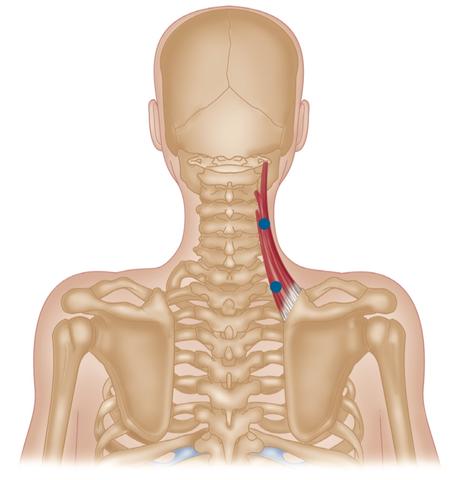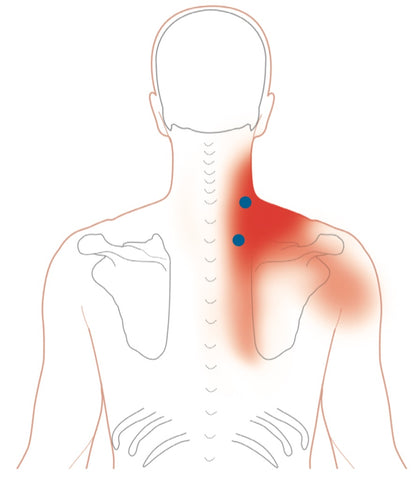Posted by Judith Winer on Oct 12, 2016

Levator Scapulae - Common Trigger Point Sites
Almost all neck pain will have myofascial trigger point contributions, and levator scapulae is commonly involved.
Levator scapulae is deep to sternocleidomastoideus and trapezius. It is named after its action of elevating the scapula.
The levator scapulae acts eccentrically to decelerate the downward forces created by the lower fibers of the trapezius and serratus anterior. The levator scapulae decelerates contralateral side flexion in the cervical spine.
Almost all neck pain will have myofascial trigger point contributions, and this muscle is commonly involved. Pain will be experienced at the angle of the neck from the superior angle, making its way down to the medial aspect of the inferior angle, with spillover all the way along the medial border of the scapula. Patients often report a stiff neck and reduced range of motion.
Origin
Posterior tubercles of transverse processes of first three or four cervical vertebrae (C1–4).
Insertion
Medial (vertebral) border of scapula, between superior angle and spine of scapula.
Connections
Action
Elevates scapula. Helps retract scapula. Helps bend neck laterally.
Nerve
Dorsal scapular nerve C4, 5, and cervical nerves C3, 4.
Basic Functional Movement
Example: carrying a heavy bag.
Sports that heavily utilize this muscle
Examples: shot put, weightlifting.

Levator Scapulae - Typical Referred Pain Patterns
Trigger Point Referred Pain Patterns
Triangular pattern from top of scapula to nape of neck. Slight overspill to medial border of scapula and posterior glenohumeral joint.
Indications
Stiff and painful neck with limited rotation of cervical spine, long-term use of walking stick, neck pain and stiffness, problems turning neck (e.g. driving).
Causes
RTA, holding telephone ear to shoulder, side sleeping with wrong pillows, backpacks, poor posture, sustained habits or occupation, TV/monitor position, stress and tension, cold/flu or cold sores, sports (swimming front crawl).
Differential Diagnosis
Scapulothoracic joint dysfunction; winging of scapula. Apophysitis and capsular-ligamentous apparatus. Shoulder impingement syndromes.
Trigger Point Treatment Techniques
| Spray and Stretch | YES |
| Deep Stroking Massage | YES |
| Compression | YES |
| Muscle Energy Techniques | YES |
| Positional Release | YES |
| Dry Needling | YES |
| Wet Needling | YES |
Self help
Self-massage techniques can be very helpful; especially balls and pressure tools.
General advice to patients
Hold telephone shoulder to ear. Stress. Occupation. Air conditioning. Passive stretching. Heat and warmth. Scarf in cold weather. Change walking stick position.
Hi there .... we see that you are using content from our website and reposting some of our blogs. Would you like to join our affiliate program?
ОтветитьУдалитьwww.nielasher.com/affiliate
Please let us know if you have any other questions.
Steve